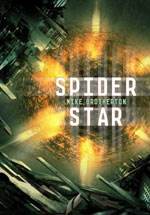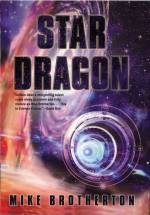Search
Science and Science Fiction: The Star
January 31st, 2008
As we transitioned in class last night from properties of light to size scales, light-speed and how its finite velocity gives us distances (in light years) seemed a natural course for the lesson plan.
One of the things we did that I thought resonated with last week’s “Cold Equations” stuff was looking at two versions of Arthur C. Clarke’s “The Star.” The 1955 story is a classic, a Hugo winner. Short and sweet, it delivers on multiple levels. If you haven’t read it, track it down and give it a try, keeping in mind it is over 50 years old. I’ll probably let a few spoilers go a paragraph or two below.
First, let me start with some science elements before moving to what is going to be the meat of the post. There are several science errors that can be chalked up to the era the story was written in. Clarke writes about a star going supernova, and the remnant being a white dwarf. Wrong. Only neutron stars or black holes are produced in supernovas. Moreover, the star is supposed to be 100 light-years away from any other star systems, very unlikely for any star young enough to go supernova (only the most massive stars with short lives explode as supernovas, and they’re only formed in the plane of the galaxy where the stellar density is high). To pile on, stars that go supernova don’t live for the many billion of years necessary to allow intelligent life to evolve (probably — took over 4 billion here, 3 billion in my novel Spider Star for the Pollux system). There are a few other technical details to pick on, but a lot of good stuff. The Jesuit astrophysicist in the story has a handful of papers published in the Astrophysical Journal and the Monthly Notices of the Royal Astronomical Society. I myself have several dozen in those venues. We publish more than they did 50 years ago.
Those are nits given the decades of additional knowledge. Where’s the beef? OK. Just like with “The Cold Equations,” the TV version raped the original story. There the corporation was made the evil enemy rather than the cold equations of physics, so even with the tragedy the audience could hate a personal enemy that had evil qualities. A little different with “The Star,” but a big change.
Spoilers. In the published version of “The Star,” the Jesuit’s faith is shaken by how callous God is sacrificing a peaceful, magnificent civilization to mark the way to Bethlehem, even while remarking we cannot judge. There is nothing to undercut this challenge to faith, the issue of this reconciliation of the marking of the coming of the son of god and the supernova. In the Christmas-time special 1980s Twilight Zone episode, nicely done for the budget in general, an extra bit was added.
The extra bit was a poem the aliens left to be found, beginning, “Do not mourn for us…blah, blah, blah, we’ve had a good, happy run…”
WTF?
It’s a total cop out, a 180 degree turn on Clarke’s intention with the story, something to let the Christmas-loving Christians feel okay about the faith-shaking story. It’s TV pandering to a mass audience for ratings. It’s cheap, stupid, and disinengenous. The commentary on the DVD remarks that some fans complained about the change. I haven’t been able to find much on the internet (the TV show was pre-internet mostly, unlike 1990s sci-fi channel version of “The Cold Equations”). But it’s another example of the difference between published sf and TV/movies.
No sir, I don’t like it. We don’t need the happy ending every time to reach the mass audience, do we? Really? Can’t we leave the classics as is, to love or hate as our predilection?
You can follow any responses to this entry through the RSS 2.0 feed. You can leave a response, or trackback from your own site.


Hear, hear! Well said! The story was written in order to give a certain feeling, of a civilisation snuffed out at it’s cultural and creative peak, for some Larger Purpose. It illustrates the idea that the universe is not always a fair place, and it might make you mad. It SHOULD make you mad! To have this story changed so fundamentally is sad. But at least the written version is always there on the shelf. Thanks for teaching it!
[…] C. Clark wrote a terrific little short story called “The Star” that I’ve blogged about before in this context, with the 1980s incarnation of the Twilight Zone changing its ending to make it a […]